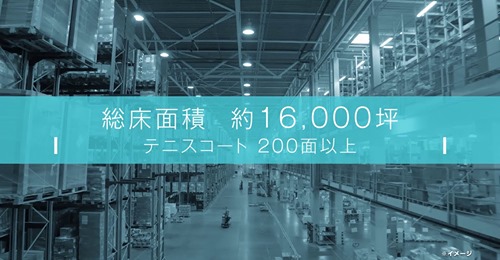
Learn How to Choose a Gas-Engine Air Compressor That Suits Your Needs, From Heavy Industrial Applications to Outdoor Projects:
Introduction
A gas-engine air compressor is a powerful, standalone tool equipped with a gasoline engine to provide energy when a direct power source is unavailable. Its ability to operate continuously in outdoor environments and on construction sites makes this type of compressor extremely valuable for the construction, manufacturing, and agricultural industries. However, to optimize performance and ensure safe operation, selecting the right compressor must be based on several technical criteria and the specific requirements of the application.
Key Factors in Choosing a Gas-Engine Air Compressor
1. Compression Performance and Operating Mechanism
A gas-engine air compressor works on the principle of compressing air through an intake and compression process. Two key technical specifications to consider are:
• CFM (Cubic Feet per Minute): Represents the volume of air compressed per minute. This value is crucial in determining whether the compressor can meet the air flow requirements of pneumatic tools.
• PSI (Pounds per Square Inch): Indicates the maximum air pressure that the compressor can achieve. This should match the requirements of the equipment used in the specific application.
2. Engine Power and Tank Capacity
• Engine Power (Horsepower – HP): This metric reflects the strength of the engine. A more powerful engine will ensure stable operation over long periods, especially when the compressor is used for heavy-duty tasks.
• Tank Capacity: Helps to maintain steady air pressure and minimizes the need for the compressor to restart continuously. The larger the tank, the more capable the compressor is of providing a continuous air supply over an extended period without interruption.
3. Weight, Dimensions, and Portability
Since gas-engine air compressors are often required to operate in locations where there is no power source, portability is extremely important:
• Weight and Dimensions: These should be considered carefully in relation to the working environment. An overly heavy compressor may limit transportability, while a smaller yet sufficiently powerful unit offers the advantage of enhanced mobility.
• Overall Design: It is advisable to prioritize models with robust construction that are easy to install and maintain. This not only helps extend the compressor’s lifespan but also ensures high performance even under harsh working conditions.
4. Duty Cycle and Operating Speed
Applications that require continuous operation demand a high duty cycle—allowing the compressor to operate steadily for long periods with appropriate rest intervals. Determining the usage cycle should be based on:
• The Actual Requirements of the Application: If the compressor needs to run continuously in an industrial environment, choose one with a high duty cycle.
• Cooling Capability and Temperature Management: Ensure the compressor has an effective cooling system to prevent overheating, which could lead to reduced performance or engine damage.
5. Maintenance Requirements and Operating Costs
Gas-powered compressors generally require more meticulous routine maintenance compared to electric models:
• Fuel Consumption and Maintenance Costs: Users need to calculate the cost of fuel and regular maintenance (such as oil changes, filter inspections, and cleaning of air components) to maintain optimal performance.
• Manufacturer Support: Choosing products with a good warranty and accessible after-sales service will help minimize risks during operation.
Advantages and Disadvantages
Advantages
• Independence from a Power Source: Suitable for areas without electricity or for outdoor environments.
• Strong Performance: Adequately meets the demands of heavy projects and continuous work.
• Portability: Although it has a certain weight, it is designed to be easily transported in various working conditions.
Disadvantages
• Fuel Consumption: Since it runs on gasoline, the energy cost may be higher compared to electric compressors.
• Noise and Emissions: It operates noisily and may produce emissions, requiring consideration of the working environment.
• Frequent Maintenance Requirements: To ensure stable performance, the compressor needs to be regularly inspected and maintained.
Conclusion
Choosing a gas-engine air compressor is not simply a matter of a few technical numbers; it requires a comprehensive assessment of usage needs, working conditions, maintenance capabilities, and operating costs. Technical guidance from experts such as The Tool Geeks, DirectIndustry, and CompressorPros has provided crucial specifications like CFM, PSI, tank capacity, and engine power—factors that significantly contribute to the performance and durability of the compressor.
A clear understanding and application of these criteria will help you select the optimal compressor, ensuring efficient and stable operation under all real-world conditions. Additional resources, such as specification comparison tables, user reviews, or real-world examples from projects, are also valuable for making an informed decision.
We hope this article has provided you with a broad and insightful perspective on choosing the right gas-engine air compressor. In addition, you may further explore the comparison between gasoline-powered and electric compressors, detailed analyses of technical specification tables, or even maintenance tips to extend the compressor’s lifespan—topics that will be highly beneficial for broadening your knowledge and investing in high-quality industrial equipment.
Now that you are aware of the key aspects of air compressors, place your order today. At QTE TECHNOLOGIES, we offer a wide range of air compressors from leading brands. With over 1 million products in our catalog, we are confident that we have a product to meet your application requirements. We are an international MRO supplier, proud to serve customers in over 180 countries.
Post Author By QTE Technologies Editorial Staff (with a solid background in both technical and creative writing - accumulated 15+ years of experience).




